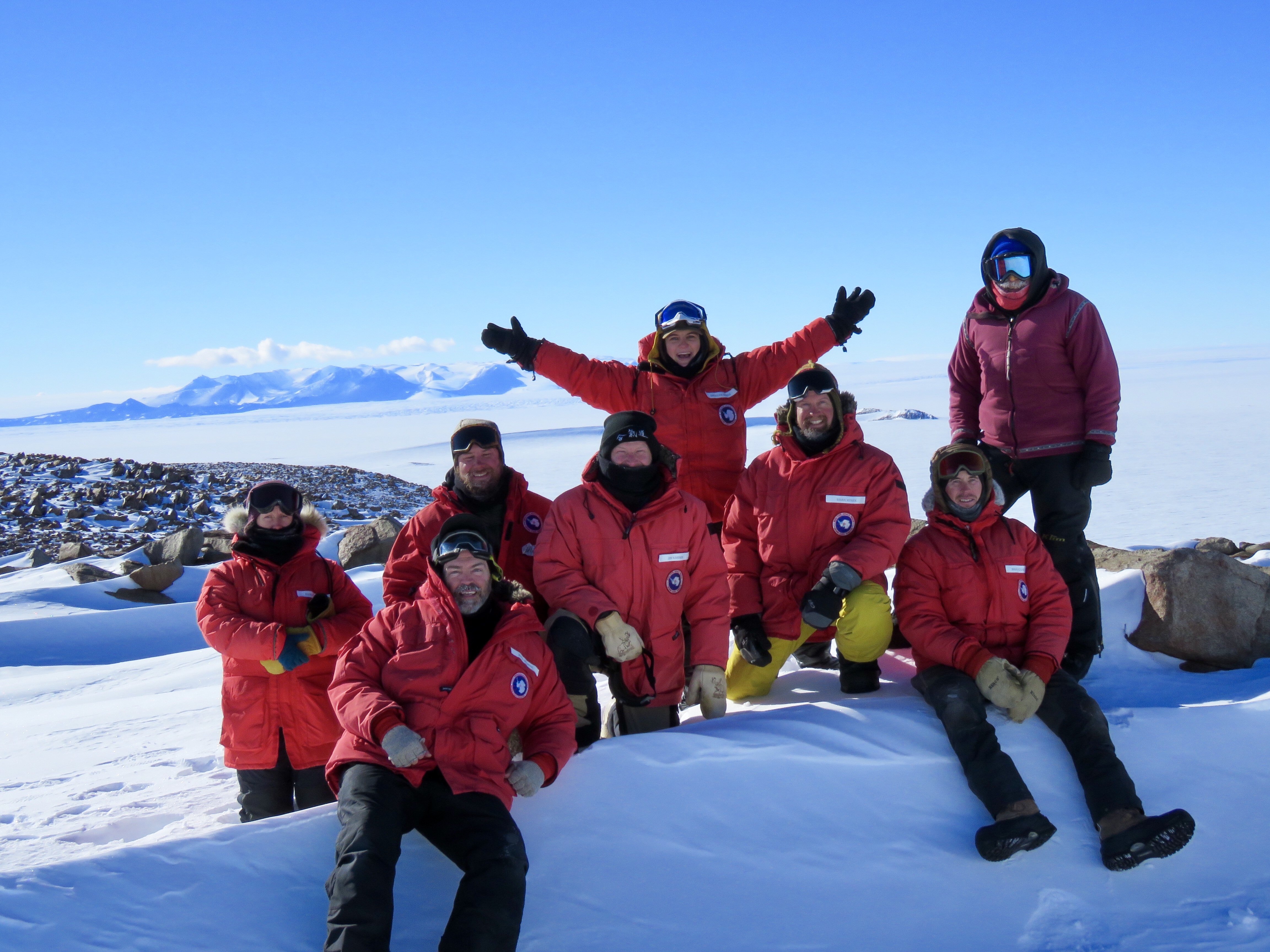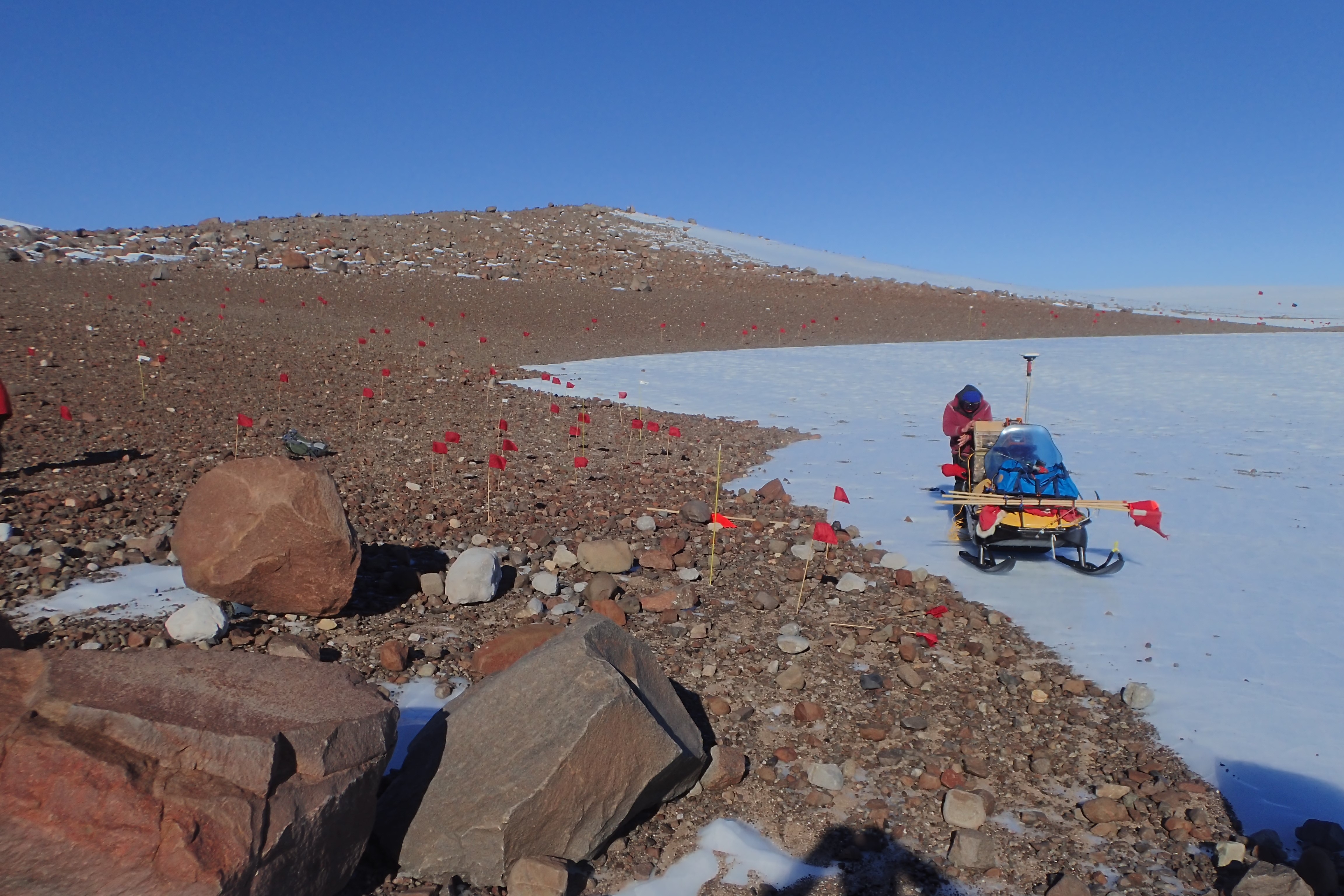Program News
Curator Comments
Kevin Righter, NASA-JSC
New Meteorites
We report the availability of 238 new meteorites, which are described here:
This new batch contains samples from the 2015 ANSMET season at the Miller Range, and includes an EH3 chondrite, CK5 chondrite, and a large (13) pairing group of CV3 chondrites, as well as several ungrouped low FeO chondrites, an H impact melt breccia, L3.5, LL4, and a veined LL5 chondrite.
Loan agreements
In the Fall of 2013, we initiated loan agreements for the Antarctic meteorite collection. Because these are 5 year agreements, many are now expiring. This is just a quick note to remind everyone that if you are still holding samples for research and your loan agreement has expired, we will need to get it renewed. Many of you will be contacted by us to get the process going.
Reclassification of MIL 090292
MIL 090292 was announced as a CR1 chondrite in the August 2012 newsletter. Subsequent studies have suggested it might be a CR2 (Harju et al., 2014), and other work has highlighted the fact that it has distinct mineralogy from CR chondrites (Ni-rich metal and cubanite, while also lacking carbonate), and has O isotopic compositions offset from the trend of CR chondrites (Jilly-Rehak et al., 2018; Schrader et al., 2014). For these reasons, and because it is a small and potentially rare meteorite, we have decided to re-classify this sample as an ungrouped C1 chondrite.
| Jilly-Rehak, C. E., Huss, G. R., Nagashima, K., & Schrader, D. L., 2018, Low-temperature aqueous alteration on the CR chondrite parent body: Implications from in situ oxygen-isotope analyses., Geochimica et Cosmochimica Acta, 222, 230-252 ,https://doi.org/10.1016/j.gca.2017.10.007. |
| Schrader, D. L., Davidson, J., Greenwood, R. C., Franchi, I. A., Gibson, J. M., 2014, A water-ice rich minor body from the early Solar System: The CR chondrite parent asteroid. , Earth and Planetary Science Letters, 407, 48-60. |
| Harju, E. R., Rubin, A. E., Ahn, I., Choi, B.-G., Ziegler, K., Wasson, J. T., 2014, Progressive aqueous alteration of CR carbonaceous chondrites, Geochimica et Cosmochimica Acta, 139 , 15-Aug-14 , 267-292 , ISSN 0016-7037 ,http://dx.doi.org/10.1016/j.gca.2014.04.048. |
Bibliography
Our online bibliography of peer-reviewed papers reporting data on samples from our collection, was updated in January with 54 new papers mostly from 2018. There are now >1600 papers compiled in the bibliography.
ANSMET 2018-2019 Field Season
Jim Karner, University of Utah
Ralph Harvey, Case Western Reserve University

Field team photo (from l to r), Elena Dobrica, John McBrine,Paul Scholar, Jim Karner, Sheridan Ackiss, Brian Hynek, Brian Rougeux, John Schutt
The 2018-19 field season to the Davis Nunataks and Mount Ward (DW) is in the books and I'd label it no less than a banner year! We recovered a whopping 865 meteorites with over a dozen achondrites included in that tally - definitely some really cool looking ones too. This year's team was led by ANMSET personnel Jim Karner, John Schutt, and Brian Rougeux, and joined by ANSMET vet Brian Hynek, along with newbies Paul Scholar, Elena Dobrica, Sheridan Ackiss and John McBrine.

John Schutt at the Beach
Our thoughts before the start of this season were that we would be able to complete search and recovery at DW this year - there was a sizeable amount of blue ice left to be skidoo searched, but most of the moraines surrounding DW had been searched, and we thought, completed. In short, we were wrong! The season got underway as the team was put-in to DW by December 15. Search efforts began the next day but the first couple weeks were tough as severe windstorms (30 to 50 knots) kept us in the tents about half the time. The winds kept us from performing a lot of skidoo sweeps on the blue ice, so we foot-searched the heavy moraines that surround the ice fields and found a surprising amount of meteorites. The winds abated on December 30 and recovery efforts ballooned as we collected 317 meteorites in one week, mostly on sweeps on the open ice but we found 80 on a down-wind ice edge that was unexpected. Good weather continued and we recovered several dozen meteorites from newly exposed wind-rows on the far reaches of the ice fields, and perhaps the most puzzling (in a good way) event was our recovery of about 200 meteorites from a moraine we call The Beach (Figure 1-those red flags are meteorites). Puzzling because this exact same area was foot-searched four years ago and we found 200 meteorites then! Obviously there is some recharge mechanism working here that is exposing new meteorites on the surface of the moraine. The team continued search and recovery efforts until January 18, when lousy weather started up again and pull-out efforts began; the whole team was out of the field by January 24. So to sum up, we did not finish our efforts at DW but for good reason - we kept finding more meteorites! We are planning on going back next season - we anticipate finishing the area off next year, but not before recovering a lot more meteorites.
Report from the Smithsonian
Cari Corrigan, Geologist (Dept. of Mineral Sci.)
This newsletter reports 238 new classifications. A few changes have occurred at the Smithsonian since the last newsletter. With some collections funds that were awarded to our Collections Manager Julie Hoskin, we have been able to hire both Chris Anders and Greg Polley to work with us for the next year. They both came on board in October, and have been working hard to help us get caught up with our collections activities. With the National Museum of Natural History having been closed for all of January for the government shutdown, and the meteorites not arriving until Feb 1, the existence of this newsletter is nothing short of miraculous. I have to shout out my most sincere thanks to our crew, Tim Gooding for making thin sections, and Chris and Greg for their amazing help with a variety of newsletter related tasks. We even recruited Ph.D. student Sam Crossley from the University of Maryland who volunteered his time to help us get the newsletter finished. These guys worked hard, and without them, this would have been a MUCH smaller newsletter. Now that the newsletter is completed, we will be turning our attention toward filling your outstanding requests.
While the Hyperprobe is still running beautifully, our SEM is starting to show its age and after 7 or 8 hard days of running EDS analyses for this current newsletter, the EDS detector is now off to the shop to be repaired. Luckily it held out long enough to classify over 200 OC meteorites for the newsletter! We are still eagerly awaiting the new cabinetry for our meteorite vault, which will expand our Museum vault storage capability, provide more workspace, and enable us to develop a new display case. In the meantime, we will continue to work through the tasks that allow us to supply you with your research materials!
